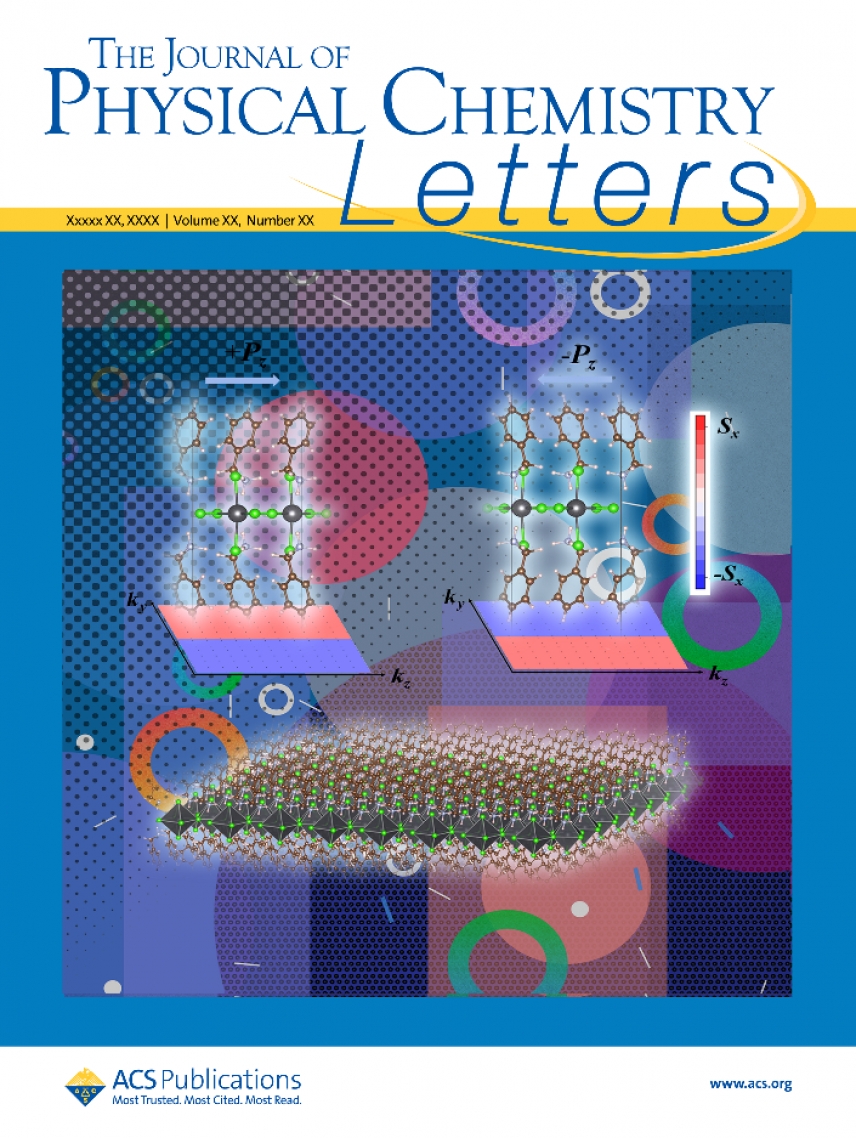The Journal of Physical Chemistry Letters has dedicated the Supplementary Cover for Persistent Spin-Texture and Ferroelectric Polarization in 2D Hybrid Perovskite Benzylammonium Lead-halide.
2D Hybrid Organic-Inorganic Perovskites (HOIPs) are introducing new directions to be explored in the 2D materials landscape. Their structural and compositional flexibility allow greater freedoms for designing and fabricating efficient optoelectronic devices including low cost solar cells, LEDs, laser diodes, detectors and other nano-optoelectronic devices.
Recently, a collaboration between CNR-SPIN and Shanghai University performed a density functional theory study on the electronic and ferroelectric properties of the bulk and monolayer benzylammonium lead-halide (C6H5CH2NH3)2PbCl4, firstly synthesized and characterized by Liao et al in Nat. Commun. 2015, 6, 7338.
The calculations indicate that both the bulk and monolayer systems have a band gap of ~3.3 eV and a spontaneous polarization of ~5.4 μC/cm2. The similar physical properties of bulk and monolayer systems suggest a strong decoupling among the layers in this hybrid organic-inorganic perovskite. Both the ferroelectricity, through associated structure distortion, and the spin-orbit coupling, through splitting induced in the electronic bands, significantly influence the electronic band gap.
Most importantly, for the first time in 2D hybrid organic-inorganic class of materials, a peculiar spin texture topology is found such as arising from unidirectional spin-orbit field which may lead to a protection against spin-decoherence. This is highly beneficial for supporting extraordinary long spin-lifetime of carriers, which is promising for the spintronics applications.
Our work has been published in The Journal of Physical Chemistry Letters (JPCL, Impact factor 2018: 7.329), a journal publishing “new and original experimental and theoretical basic research reporting a significant scientific advance and/or physical insight such that rapid publication is essential”. This work was supported by the National Natural Science Foundation of China. For further informations, contact This email address is being protected from spambots. You need JavaScript enabled to view it. or This email address is being protected from spambots. You need JavaScript enabled to view it. (corresponding authors).


